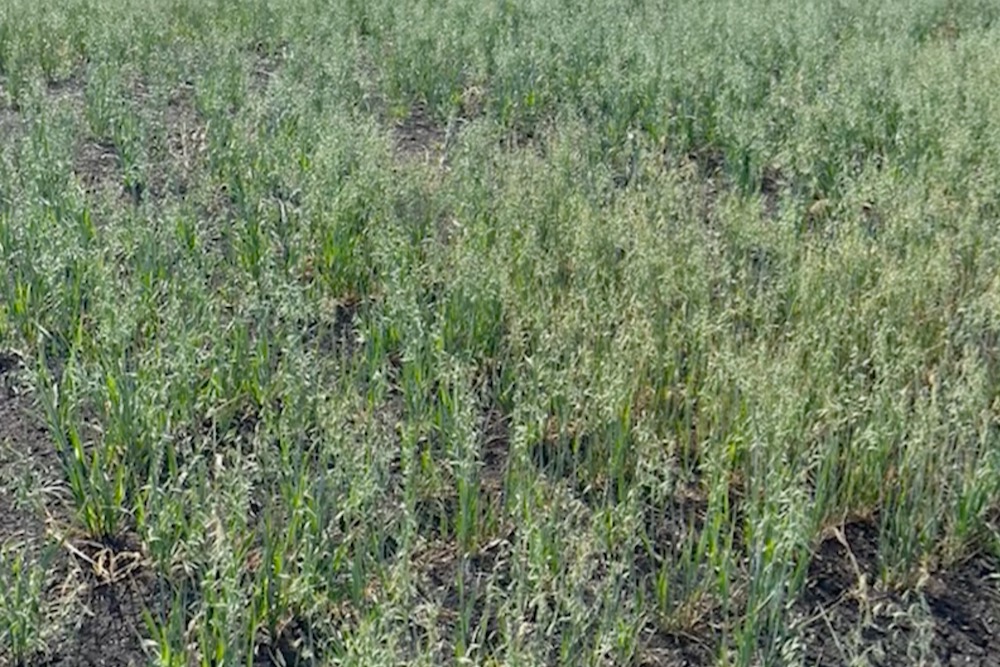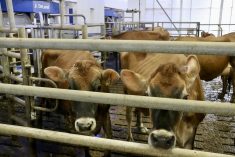The work of American researchers should provide plant breeders with new tools in the fight against the Ug99 race of wheat stem rust.
Ug99 has been identified as a threat to world food security.
In separate reports recently published in the journal Science, researchers from the University of California, Davis, document how they introduced Ug99 resistant genes into experimental wheat lines.
“These two genes are the first stem rust resistant genes ever cloned,” said Jan Dvorak, one of the researchers.
Ug99 was first discovered in East African countries, including Uganda. The disease, which can cause severe crop losses, has since moved into the Middle East.
Read Also

Saskatchewan Crop Report: Rains benefit some crops
Heavy rains fell on parts of Saskatchewan during the week ended July 17, 2025, but they were a mixed blessing for fields and pastures.
Travelling on spores, Ug99’s spread across the globe and into North American wheat and barley crops has been feared for more than a decade.
The spores could potentially be introduced to Canada by travellers or carried on winds, first from South Africa to South America and then into North America, said Tom Fetch, Agriculture Canada’s stem rust pathologist.
“If it moves into South America and establishes there, we would expect it to then move northward into Canada, probably within three to five years if it did do that,” said Fetch.
Canadian wheat breeders have developed strong resistance to stem rust and the disease hasn’t been an issue in many decades. However, Fetch said as much as 85 percent of Canadian wheat varieties would be susceptible to Ug99.
“Most of the genes for stem rust resistance within the gene pool of wheat have already been overcome by the rust,” said Dvorak.
“So we need to go further and further from the wheat gene pool into the gene pool of relatives of wheat for finding new genes so that we can deploy them. And that’s exactly what we did.”
These genes, identified as Sr33 and Sr35 and transferred into wheat from goatgrass and einkorn wheat add to a list of genes that confer resistance to Ug99. Others are in the pipeline, said Dvorak.
The ability to “pyramid” resistant genes is key to making resistant varieties that last, he added.
“Breeders, traditionally in the old days, they deployed one gene at a time. The average lifespan of a gene was something like three to five years and it was overcome by mutations in the pathogen,” he said.
With more genes at their disposal, breeders should be able to stack resistant genes and increase the utility of future varieties through traditional breeding.
The Sr33 gene was discovered many years ago at Agriculture Canada’s Cereal Research Centre in Winnipeg, said Fetch. The cloned gene will help researchers pyramid these resistant genes, giving them molecular markers that allow them to identify the presence of more than one gene.
“There are a number of genes that we’re actually working on at the Cereal Research Centre and planning to clone as well,” said Fetch.
“The more genes that scientists in different areas work on and get cloned, it makes the wheat breeders’ task easier.”
Two old wheat varieties, AC Cadillac and Peace, happen to carry multiple Ug99 resistant genes, said Fetch.
“We’re probably close to releasing some newer varieties with similar type of resistance that those old ones have,” he said.
“We have found a couple of other ones now that some of our wheat breeders have been using, but we’re probably a ways away from getting a new cultivar out with a different or newer stack of genes other than what’s already been done.”
Dvorak said the disease will continue to evolve.
“Is this an end? The answer is no. There is no end to this,” he said.
“There will always be a new race and a breeder will face new challenges from these diseases to combat them with new genes for resistance until we run out of all the genes which are available.”
















